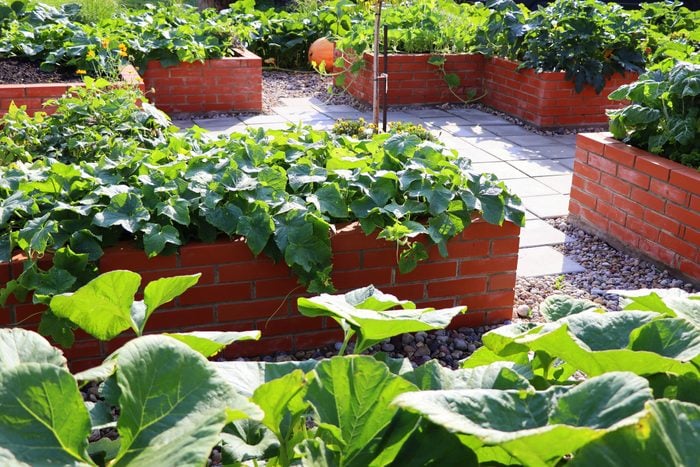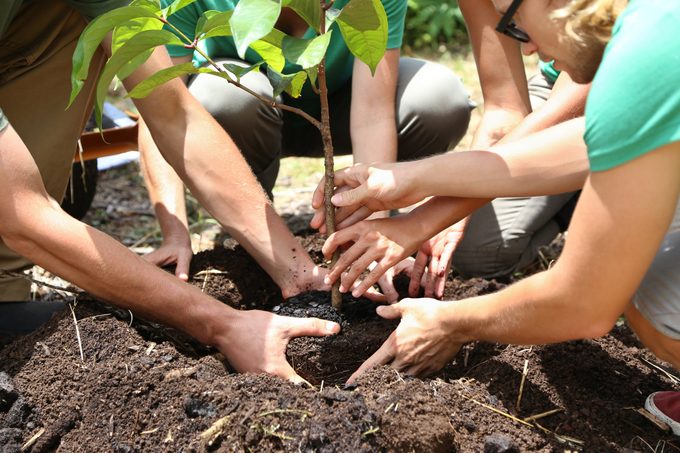What To Know To Start a Community Garden

Growing healthy, affordable food can boost your community's health, plus bring other rewards like building camaraderie and getting kids outdoors.
During World War II, people maintained food security by planting Victory Gardens at homes and public parks. It worked so well that at one point small plots provided close to 40 percent of America’s fresh vegetables.
The idea re-blossoms in times of uncertainty and scarcity, like oil crises and stock market crashes. In the last few years, the popularity of community gardens began to skyrocket again.
“More than ever, community gardens are supporting city residents not only in their everyday meals, but also socially and mentally,” says Carrie Spoonemore, co-creator of From Seed to Spoon, a garden planner app devoted to making it simple to grow food. “In times of crises, the spaces sustainably supply fresh produce to local food pantries and home kitchens.”
What Is a Community Garden?
A community garden is a joint effort to grow food and flowers in a green space. Like a co-op, everyone involved shares the upkeep and rewards. Different groups may come together to form the garden with a unifying purpose — to grow things and beautify their surroundings.
Some benefits include affordable access to healthy food, exercise and community building. It also gets people more involved in nutrition, agriculture and ecology. Learn about the concept of agrihood. It is a central farm where one can grow and harvest organic food.
“In short, starting a garden can help make real and lasting change in communities,” says Spoonemore.
Steps for Starting a Community Garden
While each locale has rules and guidelines for community gardens, here are some universal steps for starting one.
Organize interested people
Ask your friends and community about creating a community garden and what should be in it, like vegetables or flower.
“Invite neighbors, tenants, community organizations, gardening and horticultural societies and building superintendents,” says Spoonemore. “Once you determine interest, form a planning committee of five to 10 people who are committed to the creation of the garden.”
Make a plan and an end goal
Decide how your community garden will be used. Will the food be donated to the community? Or will interested people be allowed to grow their own specific crops? Other possibilities are a pound allocation per volunteer, or sales of produce at markets.
“An efficient plan is needed to get the most out of your garden and to know what the best uses of your crop will be,” says Spoonemore.
Identify resources
Contact municipal planners about possible sites. Find knowledgeable partners, like horticultural societies and experienced landscapers and gardeners. Think about all the resources in your community you could tap to create the garden.
Find a sponsor
While some gardens self-support through membership dues, sponsors are essential for donating tools, seeds and money for other supplies. Popular supporters include churches, schools, private businesses and parks and recreation departments.
Choose a site
Think about growing factors like sun, access to water sources and the quality of the soil. Also consider administrative issues, like whether you can get a lease, or if you need liability insurance.
Write up the rules
Rules help gardeners know what’s expected. Will there be dues, and if so, how will the money be used? Can tools be shared? Who handles basic maintenance? How many plots are available and how will they be assigned?
Prep and develop the site
In most cases, the land will need to be prepared. Volunteer crews can clean, gather materials and design the plot arrangement. Include space for storing tools and making compost, and consider creating a special garden just for kids.
“Including them is essential,” says Spoonemore. “Children are not as interested in the size of the harvest, but rather in the process of gardening. A separate area set aside for them allows them to explore the garden at their own speed.”
Also, planting flowers or shrubs around the garden’s edges promote goodwill with non-gardening neighbors.
Communicate
Easy communication among members helps ensure active participation and a strong community garden. Create a telephone tree or email list, plus a rainproof bulletin board in the garden. Regular celebrations also help keep people engaged.
What Is the Cost of Starting and Maintaining a Community Garden?
Startup costs are typically between $3,750 to $7,500, although large community gardens can run as much as $30,000. When budgeting, keep water sources, city fees and contractor wages in mind.
Community gardens also require liability insurance, which can cost between $750 and $2,000 per year. Then plan for between $50 and $100 per month for plots not maintained by members, plus lot rent, which is often several thousand dollars a month depending on size and location.
Community gardeners can be charged between $25 and $50 a year, says Spoonemore. If a community garden is smart about maintaining memberships and selling produce, it can make as much as $50,000 per year. However, Spoonemore says, “Having a sustainable food operation depends on the local economy, as does a lot’s ability to market and retain members.”
More Resources for Starting a Community Garden
- Start with the American Community Gardening Association (ACGA). They have an annual conference, resources and a community.
- Visit existing gardens.
- Consult your local university cooperative extension office.
- Try these resources from the U.S. Department of Agriculture.
- Get a planting app, like Park Seed’s From Seed to Spoon. It helps you plan when to plant, choose good companion plants, and estimate important dates like sprouting, harvest and frost.




